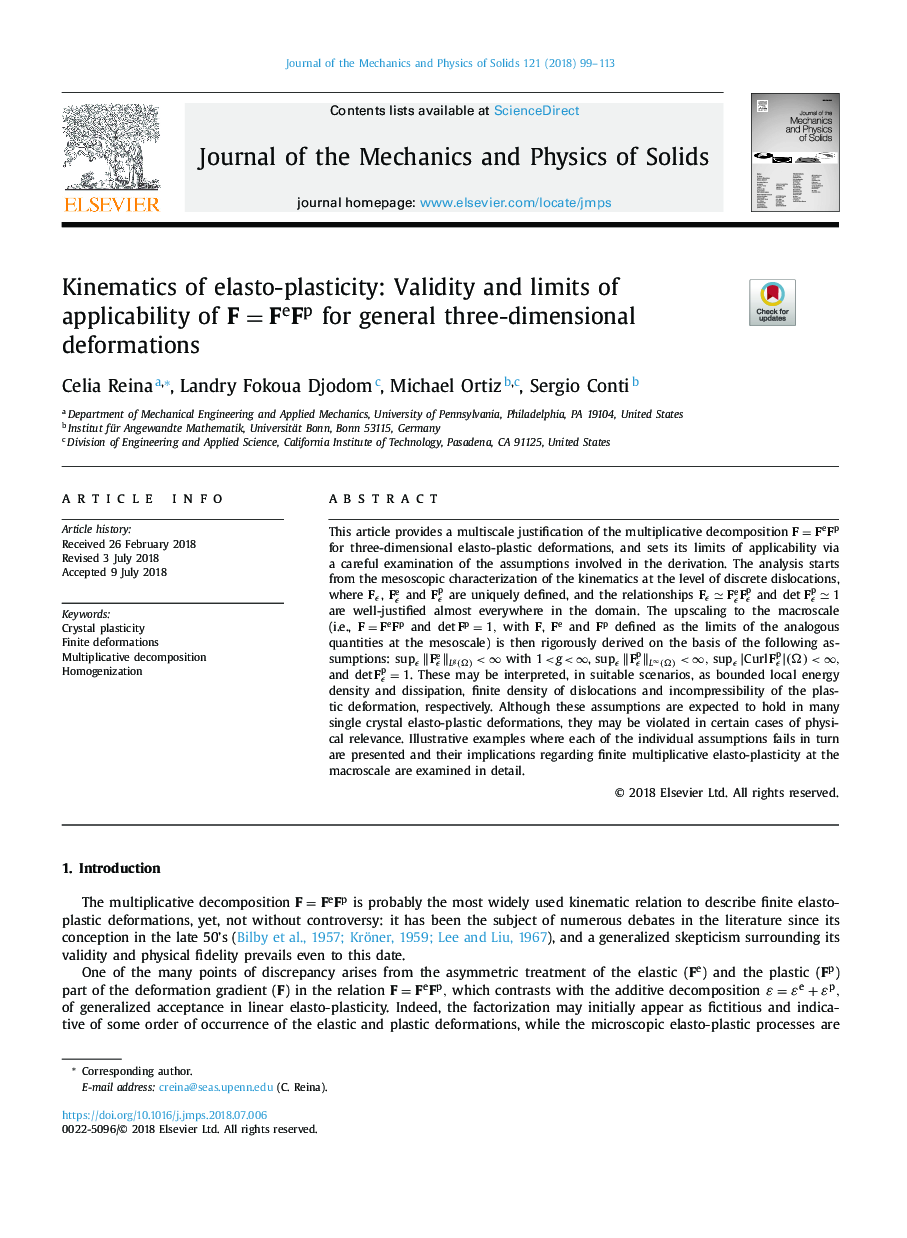| Article ID | Journal | Published Year | Pages | File Type |
|---|---|---|---|---|
| 7177329 | Journal of the Mechanics and Physics of Solids | 2018 | 15 Pages |
Abstract
This article provides a multiscale justification of the multiplicative decomposition F=FeFp for three-dimensional elasto-plastic deformations, and sets its limits of applicability via a careful examination of the assumptions involved in the derivation. The analysis starts from the mesoscopic characterization of the kinematics at the level of discrete dislocations, where Fϵ, Fϵe and Fϵp are uniquely defined, and the relationships FϵâFϵeFϵp and detFϵpâ1 are well-justified almost everywhere in the domain. The upscaling to the macroscale (i.e., F=FeFp and detFp=1, with F, Fe and Fp defined as the limits of the analogous quantities at the mesoscale) is then rigorously derived on the basis of the following assumptions: supϵâ¥Fϵeâ¥Lg(Ω)<â with 1â¯<â¯gâ¯<â¯â, supϵâ¥Fϵpâ¥Lâ(Ω)<â,supϵ|CurlFϵp|(Ω)<â, and detFϵp=1. These may be interpreted, in suitable scenarios, as bounded local energy density and dissipation, finite density of dislocations and incompressibility of the plastic deformation, respectively. Although these assumptions are expected to hold in many single crystal elasto-plastic deformations, they may be violated in certain cases of physical relevance. Illustrative examples where each of the individual assumptions fails in turn are presented and their implications regarding finite multiplicative elasto-plasticity at the macroscale are examined in detail.
Related Topics
Physical Sciences and Engineering
Engineering
Mechanical Engineering
Authors
Celia Reina, Landry Fokoua Djodom, Michael Ortiz, Sergio Conti,
